3GPP TS 23.040 V3.10.0 (2003-06)
Technical Specification
3rd Generation Partnership Project;
Technical Specification Group Terminals;
Technical realization of the Short Message Service (SMS)
(Release 1999)
GLOBAL SYSTEM FOR
MOBILE COMMUNICATIONS
R
The present document has been developed within the 3rd Generation Partnership Project (3GPP TM) and may be further elaborated for the purposes of 3GPP.
The present document has not been subject to any approval process by the 3GPP Organisational Partners and shall not be implemented.
This Specification is provided for future development work within 3GPP only. The Organisational Partners accept no liability for any use of this Specification.
Specifications and reports for implementation of the 3GPP TM system should be obtained via the 3GPP Organisational Partners' Publications Offices.
�
Release 1999
2
3GPP TS 23.040 V3.10.0 (2003-06)
Keywords
GSM, UMTS, terminal, SMS
3GPP
Postal address
3GPP support office address
650 Route des Lucioles - Sophia Antipolis
Valbonne - FRANCE
Tel.: +33 4 92 94 42 00 Fax: +33 4 93 65 47 16
Internet
http://www.3gpp.org
Copyright Notification
No part may be reproduced except as authorized by written permission.
The copyright and the foregoing restriction extend to reproduction in all media.
© 2003, 3GPP Organizational Partners (ARIB, CWTS, ETSI, T1, TTA, TTC).
All rights reserved.
3GPP
�
Release 1999
3
3GPP TS 23.040 V3.10.0 (2003-06)
Contents
Foreword ............................................................................................................................................................6
Introduction ........................................................................................................................................................6
1
Scope........................................................................................................................................................7
2
References................................................................................................................................................7
2.1 Definitions and abbreviations.................................................................................................................................. 9
2.1.1
Definitions ......................................................................................................................................................... 9
2.1.2
Abbreviations................................................................................................................................................... 11
Services and service elements................................................................................................................11
3
3.1 Basic services ........................................................................................................................................................ 11
3.2
Short Message Service elements ........................................................................................................................... 12
3.2.1
Validity-Period ................................................................................................................................................ 12
3.2.2
Service-Centre-Time-Stamp ............................................................................................................................ 13
Protocol-Identifier............................................................................................................................................ 13
3.2.3
3.2.4
More-Messages-to-Send .................................................................................................................................. 13
3.2.5
Delivery of Priority and non-Priority Messages .............................................................................................. 13
3.2.6
Messages-Waiting............................................................................................................................................ 13
Alert-SC........................................................................................................................................................... 16
3.2.7
Options concerning MNRG, MNRF, MNRR, MCEF and MWD.................................................................... 16
3.2.8
3.2.9
Status report capabilities.................................................................................................................................. 17
3.2.10
Reply Path........................................................................................................................................................ 18
3.3 Unsuccessful short message TPDU transfer SC -> MS......................................................................................... 18
3.3.1
Errors occurring during transfer of TPDU to MS ............................................................................................ 18
3.3.2
Errors occurring after TPDU arrives at MS..................................................................................................... 18
3.4 Unsuccessful short message TPDU transfer MS -> SC......................................................................................... 20
3.4.1
Errors occurring during transfer of TPDU to SC............................................................................................. 20
3.4.2
Errors occurring after TPDU arrives at SC...................................................................................................... 20
3.5 Use of Supplementary Services in combination with the Short Message Service................................................. 21
3.6 Applicability of Operator Determined Barring to the Short Message Service ...................................................... 21
3.7 Multiple short message transfer............................................................................................................................. 21
SMS and Internet Electronic Mail interworking ................................................................................................... 21
3.8
Basic Format.................................................................................................................................................... 21
3.8.1
3.8.2
Optional Fields................................................................................................................................................. 22
3.8.2.1
Subject ............................................................................................................................................................. 22
3.8.2.2 Real Name ....................................................................................................................................................... 22
3.8.2.3 Optional Control Flag ...................................................................................................................................... 22
3.8.3
Text concatenation........................................................................................................................................... 23
3.8.4
Alternative characters for Internet email addresses in MO SMS..................................................................... 23
3.9
SMS COMPRESSION.......................................................................................................................................... 23
Enhanced Messaging Service .......................................................................................................................... 24
3.10
3.10.1
Text formatting ................................................................................................................................................ 24
3.10.2
Pictures ............................................................................................................................................................ 24
3.10.3
Animations....................................................................................................................................................... 25
Sound............................................................................................................................................................... 25
3.10.4
Network architecture..............................................................................................................................25
4
4.1 Basic network structure......................................................................................................................................... 25
4.2
Transfer on link 3 .................................................................................................................................................. 26
5
Service Centre and PLMN interconnection............................................................................................26
5.1
Service centre connection...................................................................................................................................... 26
5.2 Routing requirements ............................................................................................................................................ 27
5.2.1
Mobile terminated short message .................................................................................................................... 27
Mobile originated short message ..................................................................................................................... 27
5.2.2
Service Centre functionality...................................................................................................................27
6
6.1
Service Centre capabilities .................................................................................................................................... 27
3GPP
�
Release 1999
4
3GPP TS 23.040 V3.10.0 (2003-06)
SC functional requirements ................................................................................................................................... 27
6.2
7
MS functionality.....................................................................................................................................28
7.1 MS capabilities...................................................................................................................................................... 28
7.2 MS configuration................................................................................................................................................... 28
Node functionality..................................................................................................................................28
8
8.1 Node functionality related to SM MT ................................................................................................................... 29
8.1.1
Functionality of the SMS-GMSC .................................................................................................................... 29
8.1.2
Functionality of the MSC ................................................................................................................................ 31
8.1.3
Functionality of the SGSN............................................................................................................................... 31
8.2 Node functionality related to SM MO................................................................................................................... 32
8.2.1
Functionality of the MSC ................................................................................................................................ 32
8.2.2
Functionality of the SMS-IWMSC .................................................................................................................. 33
8.2.3
Functionality of the SGSN............................................................................................................................... 33
SMS-IWMSC functionality related to alerting...................................................................................................... 33
8.3
Protocols and protocol architecture........................................................................................................33
9
9.1
Protocol element features ...................................................................................................................................... 34
9.1.1
Octet and Bit transmission order...................................................................................................................... 34
9.1.2
Numeric and alphanumeric representation ...................................................................................................... 34
Integer representation ...................................................................................................................................... 34
9.1.2.1
9.1.2.2 Octet representation ......................................................................................................................................... 35
9.1.2.3
Semi-octet representation ................................................................................................................................ 35
9.1.2.4 Alphanumeric representation........................................................................................................................... 36
9.1.2.5 Address fields .................................................................................................................................................. 36
9.2
Service provided by the SM-TL ............................................................................................................................ 38
9.2.1
General............................................................................................................................................................. 38
9.2.2
PDU Type repertoire at SM-TL....................................................................................................................... 38
SMS-DELIVER type ....................................................................................................................................... 38
9.2.2.1
9.2.2.1a
SMS-DELIVER-REPORT type................................................................................................................. 41
9.2.2.2
SMS-SUBMIT type......................................................................................................................................... 42
9.2.2.2a
SMS-SUBMIT-REPORT type................................................................................................................... 45
SMS-STATUS-REPORT type......................................................................................................................... 47
9.2.2.3
9.2.2.4
SMS-COMMAND type................................................................................................................................... 49
9.2.3
Definition of the TPDU parameters................................................................................................................. 50
9.2.3.1 TP-Message-Type-Indicator (TP-MTI) ........................................................................................................... 50
9.2.3.2 TP-More-Messages-to-Send (TP-MMS) ......................................................................................................... 50
9.2.3.3 TP-Validity-Period-Format (TP-VPF)............................................................................................................. 50
9.2.3.4 TP-Status-Report-Indication (TP-SRI) ............................................................................................................ 51
9.2.3.5 TP-Status-Report-Request (TP-SRR) .............................................................................................................. 51
9.2.3.6 TP-Message-Reference (TP-MR) .................................................................................................................... 51
9.2.3.7 TP-Originating-Address (TP-OA) ................................................................................................................... 51
9.2.3.8 TP-Destination-Address (TP-DA) ................................................................................................................... 51
9.2.3.9 TP-Protocol-Identifier (TP-PID)...................................................................................................................... 51
9.2.3.10
TP-Data-Coding-Scheme (TP-DCS).......................................................................................................... 54
TP-Service-Centre-Time-Stamp (TP-SCTS).............................................................................................. 54
9.2.3.11
TP-Validity-Period (TP-VP) ...................................................................................................................... 54
9.2.3.12
9.2.3.12.1
TP-VP (Relative format) ............................................................................................................................ 54
9.2.3.12.2
TP-VP (Absolute format)........................................................................................................................... 55
TP-VP (Enhanced format).......................................................................................................................... 55
9.2.3.12.3
TP-Discharge-Time (TP-DT)..................................................................................................................... 55
9.2.3.13
9.2.3.14
TP-Recipient-Address (TP-RA)................................................................................................................. 56
9.2.3.15
TP-Status (TP-ST)...................................................................................................................................... 56
9.2.3.16
TP-User-Data-Length (TP-UDL)............................................................................................................... 57
TP-Reply-Path (TP-RP) ............................................................................................................................. 57
9.2.3.17
9.2.3.18
TP-Message-Number (TP-MN) ................................................................................................................. 57
9.2.3.19
TP-Command-Type (TP-CT)..................................................................................................................... 58
9.2.3.20
TP-Command-Data-Length (TP-CDL) ...................................................................................................... 58
TP-Command-Data (TP-CD) ..................................................................................................................... 58
9.2.3.21
TP-Failure-Cause (TP-FCS)....................................................................................................................... 59
9.2.3.22
9.2.3.23
TP-User-Data-Header-Indicator (TP-UDHI) ............................................................................................. 60
9.2.3.24
TP-User Data (TP-UD) .............................................................................................................................. 60
3GPP
�
Release 1999
5
3GPP TS 23.040 V3.10.0 (2003-06)
Concatenated Short Messages.................................................................................................................... 63
9.2.3.24.1
9.2.3.24.2
Special SMS Message Indication............................................................................................................... 65
9.2.3.24.3 Application Port Addressing 8 bit address ................................................................................................. 66
9.2.3.24.4 Application Port Addressing 16 bit address ............................................................................................... 67
9.2.3.24.5
SMSC Control Parameters ......................................................................................................................... 67
9.2.3.24.6 UDH Source Indicator................................................................................................................................ 68
9.2.3.24.7
(U)SIM Toolkit Security Headers .............................................................................................................. 68
9.2.3.24.8
Concatenated short messages, 16-bit reference number............................................................................. 69
9.2.3.24.9 Wireless Control Message Protocol ........................................................................................................... 70
9.2.3.24.10
Enhanced Messaging Service ............................................................................................................... 70
RFC 822 E-Mail Header....................................................................................................................... 75
9.2.3.24.11
TP-Reject-Duplicates (TP-RD) .................................................................................................................. 78
9.2.3.25
9.2.3.26
TP-Status-Report-Qualifier (TP-SRQ)....................................................................................................... 78
9.2.3.27
TP-Parameter-Indicator (TP-PI)............................................................................................................... 78
Service provided by the SM-RL............................................................................................................................ 79
9.3
9.3.1
General............................................................................................................................................................. 79
9.3.2
Protocol element repertoire at SM-RL............................................................................................................. 79
9.3.2.1 RP-MO-DATA ................................................................................................................................................ 79
9.3.2.2 RP-MT-DATA................................................................................................................................................. 80
9.3.2.3 RP-ACK........................................................................................................................................................... 80
9.3.2.4 RP-ERROR...................................................................................................................................................... 80
9.3.2.5 RP-ALERT-SC................................................................................................................................................ 81
9.3.2.6 RP-SM-MEMORY-AVAILABLE.................................................................................................................. 81
Fundamental procedures within SMS ....................................................................................................81
10
10.1
Short message mobile terminated .................................................................................................................... 81
10.2
Short message mobile originated..................................................................................................................... 94
10.3
Alert transfer.................................................................................................................................................... 99
11 Mapping of error causes between RP layers ........................................................................................102
Mobile Terminated short message transfer.................................................................................................... 102
11.1
11.2
Memory available notification....................................................................................................................... 102
11.3
Mobile Originated short message transfer ..................................................................................................... 103
Protocol stacks for interconnecting SCs and MSCs .................................104
Annex A (informative):
Information now contained in 3GPP TS 23.038 [9]..................................105
Annex B (informative):
Short message information flow .................................................................106
Annex C (informative):
Mobile Station reply procedures ................................................................123
Annex D (informative):
D.1
Introduction..........................................................................................................................................123
D.2 The scope of applicability ....................................................................................................................123
D.3 Terminology.........................................................................................................................................123
D.4 The reply path requesting procedure....................................................................................................123
D.5 The reception of an original MT SM ...................................................................................................124
D.6 The submission of the reply MO SM...................................................................................................124
D.7 Usage of SCs for replying ....................................................................................................................124
D.8 Replying possibilities for Phase 1 mobile stations...............................................................................125
D.9 The resulting service for originating SMEs .........................................................................................125
Change history .............................................................................................126
Annex E (informative):
3GPP
�
Release 1999
6
3GPP TS 23.040 V3.10.0 (2003-06)
Foreword
This Technical Specification (TS) has been produced by the 3rd Generation Partnership Project (3GPP).
The contents of the present document are subject to continuing work within the TSG and may change following formal
TSG approval. Should the TSG modify the contents of the present document, it will be re-released by the TSG with an
identifying change of release date and an increase in version number as follows:
Version x.y.z
where:
x
the first digit:
1 presented to TSG for information;
2 presented to TSG for approval;
3 or greater indicates TSG approved document under change control.
y
the second digit is incremented for all changes of substance, i.e. technical enhancements, corrections,
updates, etc.
z
the third digit is incremented when editorial only changes have been incorporated in the document.
Introduction
The Short Message Service (SMS) provides a means of sending messages of limited size to and from GSM/UMTS
mobiles. The provision of SMS makes use of a Service Centre, which acts as a store and forward centre for short
messages. Thus a GSM/UMTS PLMN needs to support the transfer of short messages between Service Centres and
mobiles.
Mobile originated messages shall be transported from an MS to a Service Centre. These may be destined for other
mobile users, or for subscribers on a fixed network. Mobile terminated messages shall be transported from a Service
Centre to an MS. These may be input to the Service Centre by other mobile users (via a mobile originated short
message) or by a variety of other sources, e.g. speech, telex, or facsimile.
3GPP
�
Release 1999
7
3GPP TS 23.040 V3.10.0 (2003-06)
Scope
1
The present document describes the Short Message Service (SMS) for GSM/UMTS networks. It defines:
-
-
-
-
-
-
-
the services and service elements;
the network architecture;
the Service Centre functionality;
the MSC functionality (with regard to the SMS);
the SGSN functionality (with regard to the SMS);
the routing requirements;
the protocols and protocol layering;
for the Teleservice Short Message Service, as specified in the GSM TS 02.03 [2] and 3GPP TS 22.105 [32].
The use of radio resources for the transfer of short messages between the MS and the MSC or the SGSN is described in
3GPP TS 24.011 [13] "Short Message Service Support on Mobile Radio Interface", and is dealt with in that
specification.
The network aspects of Short Message Service provision are outside the scope of the present document (i.e. the
provision of network connectivity between the PLMN subsystems). There is no technical restriction within the present
document for the transfer of short messages between different PLMN's. Any such restriction is likely to be subject to
commercial arrangements and PLMN operators must make their own provision for interworking or for preventing
interworking with other PLMN’s as they see fit.
The required and assumed network service offered to the higher layers is defined in the present document.
References
2
The following documents contain provisions which, through reference in this text, constitute provisions of the present
document.
• References are either specific (identified by date of publication, edition number, version number, etc.) or non-
specific.
• For a specific reference, subsequent revisions do not apply.
• For a non-specific reference, the latest version applies. In the case of a reference to a 3GPP document (including
a GSM document), a non-specific reference implicitly refers to the latest version of that document in the same
Release as the present document.
[1]
[2]
[3]
[4]
[5]
[6]
[7]
[8]
[9]
GSM 01.04: "Abbreviations and acronyms".
GSM 02.03: "Teleservices supported by a GSM Public Land Mobile Network (PLMN)".
3GPP TS 22.004: "General on supplementary services".
3GPP TS 22.041: "Operator Determined Barring (ODB)".
GSM 03.02: "Network architecture".
3GPP TS 23.008: "Organization of subscriber data".
3GPP TS 23.011: "Technical realization of supplementary services".
3GPP TS 23.015: "Technical realisation of Operator Determined Barring (ODB)".
3GPP TS 23.038: "Alphabets and language-specific information".
3GPP
�
Release 1999
8
3GPP TS 23.040 V3.10.0 (2003-06)
[10]
[11]
[12]
[13]
[14]
[15]
[16]
[17]
[18]
[19]
[20]
[21]
[22]
[23]
[24]
[25]
[26]
[27]
[28]
[29]
[30]
[31]
[32]
[33]
[34]
3GPP TS 23.041: "Technical realization of Cell Broadcast Service (CBS)".
GSM 03.47 (ETR 354): "Example protocol stacks for interconnecting Service Centre(s) (SC) and
Mobile-services Switching Centre(s) (MSC)".
GSM 04.08: "Mobile radio interface layer 3 specification".
3GPP TS 24.011: "Point-to-Point (PP) Short Message Service (SMS) support on mobile radio
interface".
3GPP TS 27.005: "Use of Data Terminal Equipment - Data Circuit terminating Equipment
(DTE - DCE) interface for Short Message Service (SMS) and Cell Broadcast Service (CBS)".
3GPP TS 29.002: "Mobile Application Part (MAP) specification".
GSM 11.11: "Specification of the Subscriber Identity Module - Mobile Equipment (SIM- ME)
interface".
ITU-T Recommendation E.164 (Blue Book): "The international public telecommunication
numbering plan".
ITU-T Recommendation E.163 (Blue Book): "Numbering plan for the international telephone
service".
ITU-T Recommendation Q.771: "Functional description of transaction capabilities".
ITU-T Recommendation T.100 (Blue Book): "International information exchange for interactive
videotex".
ITU-T Recommendation T.101 (Blue Book): "International interworking for videotex services".
ITU-T Recommendation X.121 (Blue Book): "International numbering plan for public data
networks".
ITU-T Recommendation X.400 (Blue Book): "Message handling services: Message handling
system and service overview".
ISO/IEC10646: "Universal Multiple-Octet Coded Character Set (USC); UCS2, 16 bit coding".
3GPP TS 22.022: "Personalisation of Mobile Equipment (ME); Mobile functionality
specification".
3GPP TS 23.042: "Compression Algorithm for Text Messaging Services".
3GPP TS 23.060: "General Packet Radio Service (GPRS); Service description; Stage 2".
GSM 03.48: "Security Mechanisms for the SIM application toolkit; Stage 2".
3GPP TR 21.905: "Vocabulary 3GPP Specifications".
3GPP TS 31.102: "Characteristics of the USIM application".
3GPP TS 31.101: "UICC – Terminal interface; Physical and logical characteristics".
3GPP TS 22.105: "Services & Service Capabilites".
Infrared Data Association. Specifications for Ir Mobile Communications (IrMC).
iMelody.
IETF RFC 822: "Standard for the format of ARPA Internet text messages".
3GPP
�
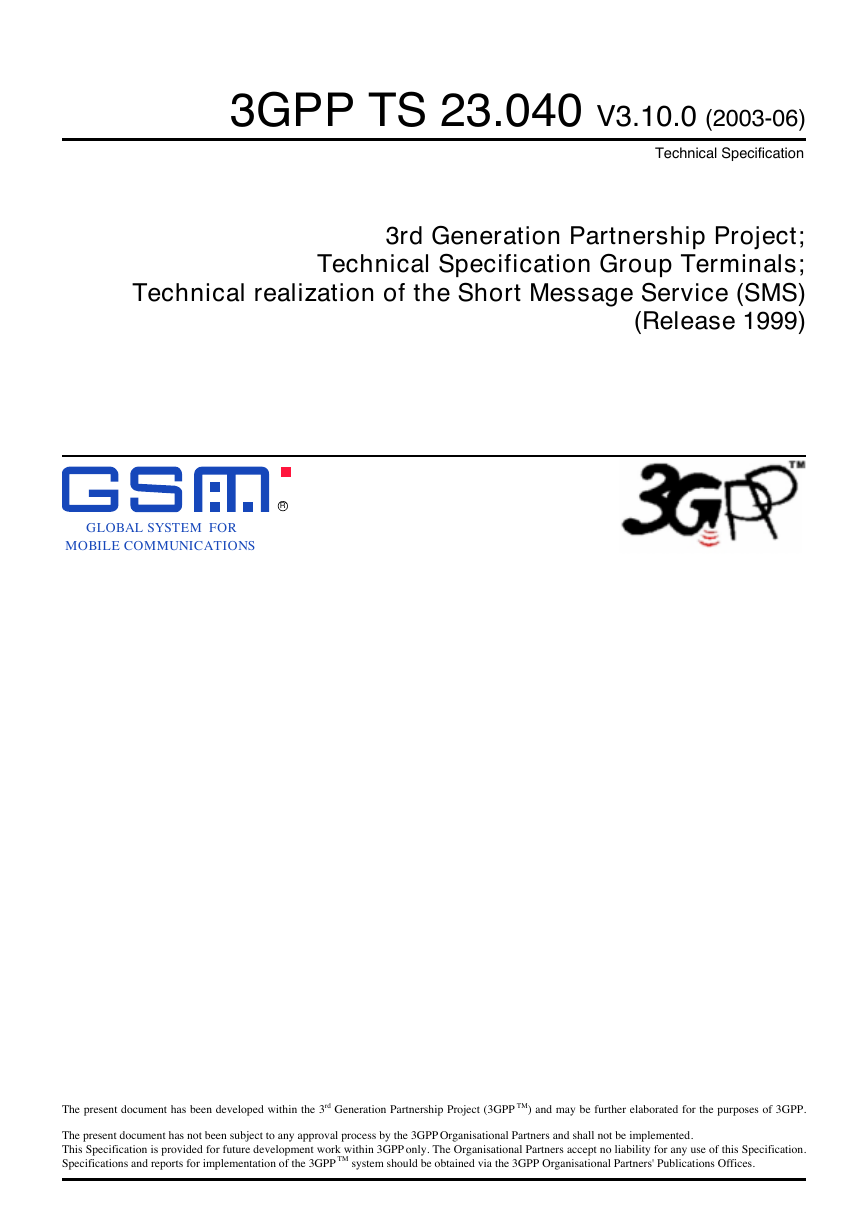
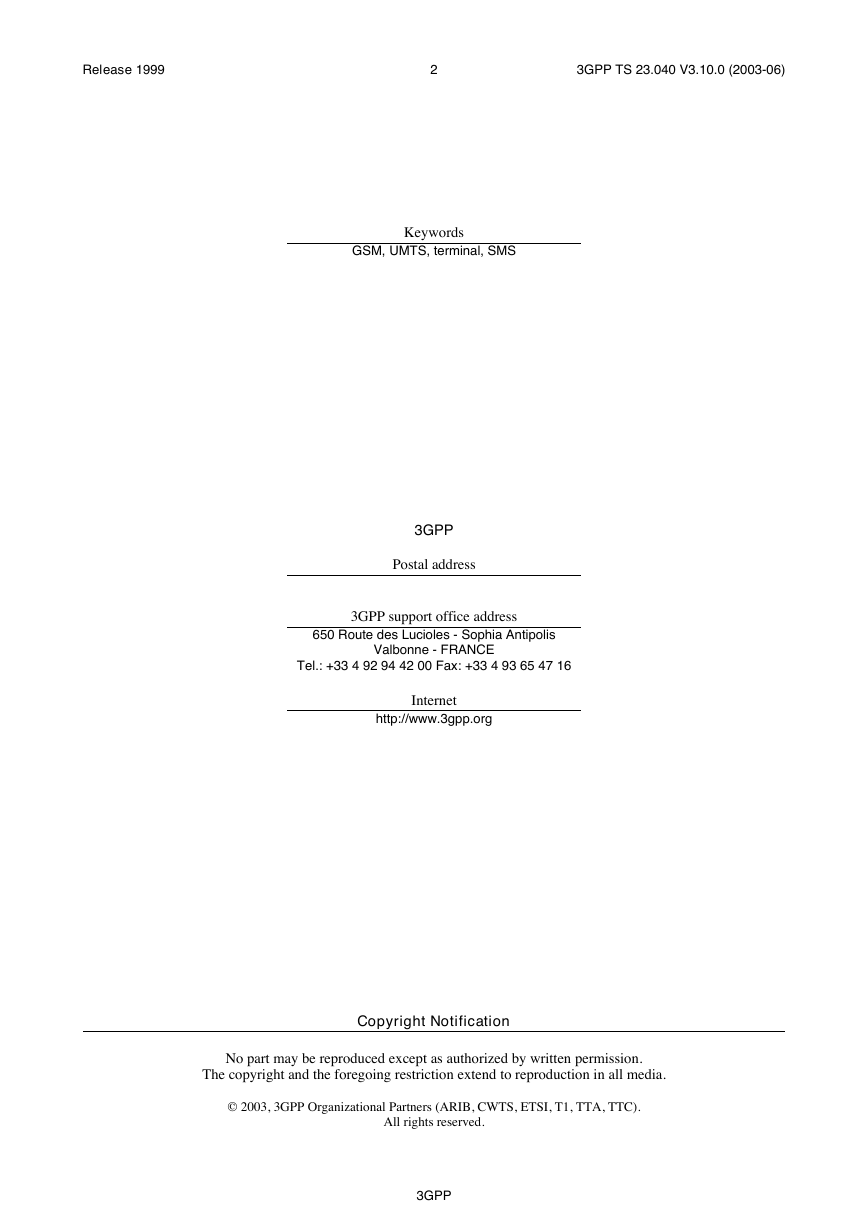
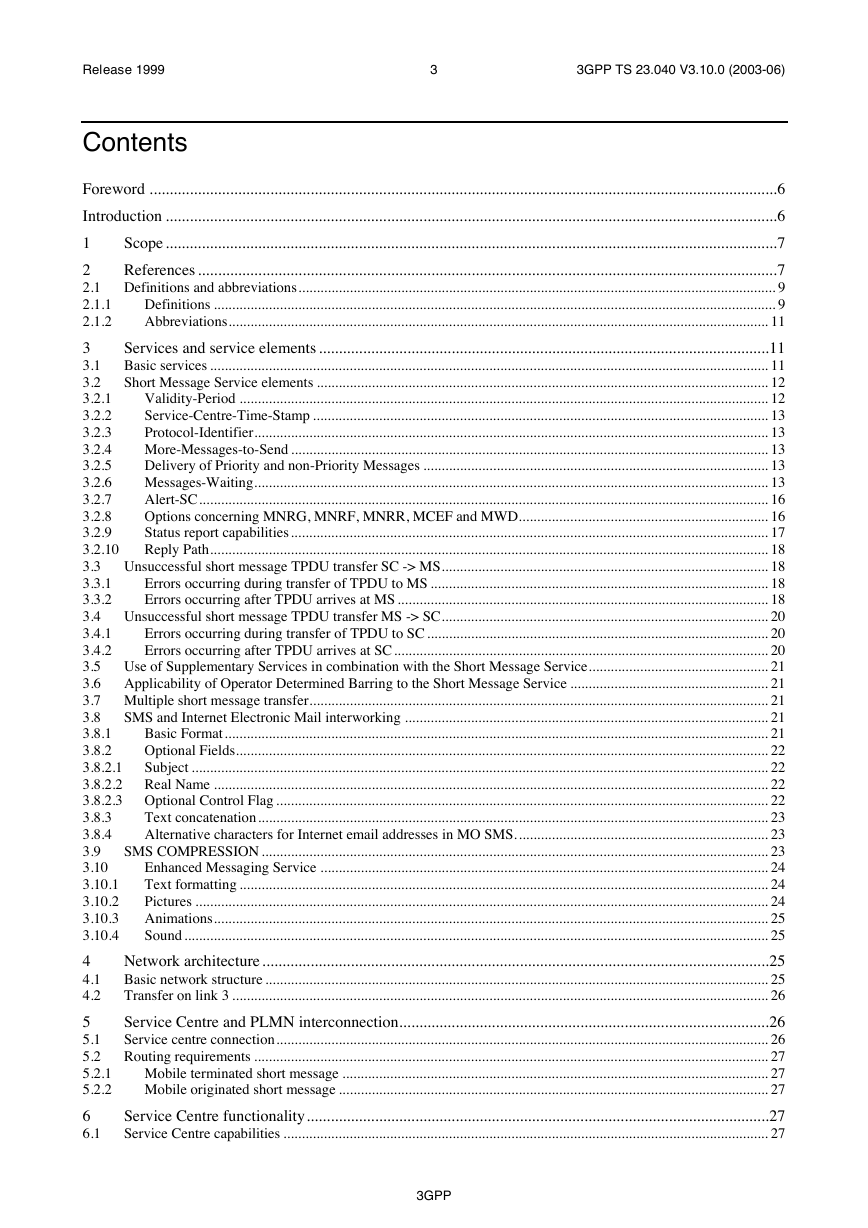

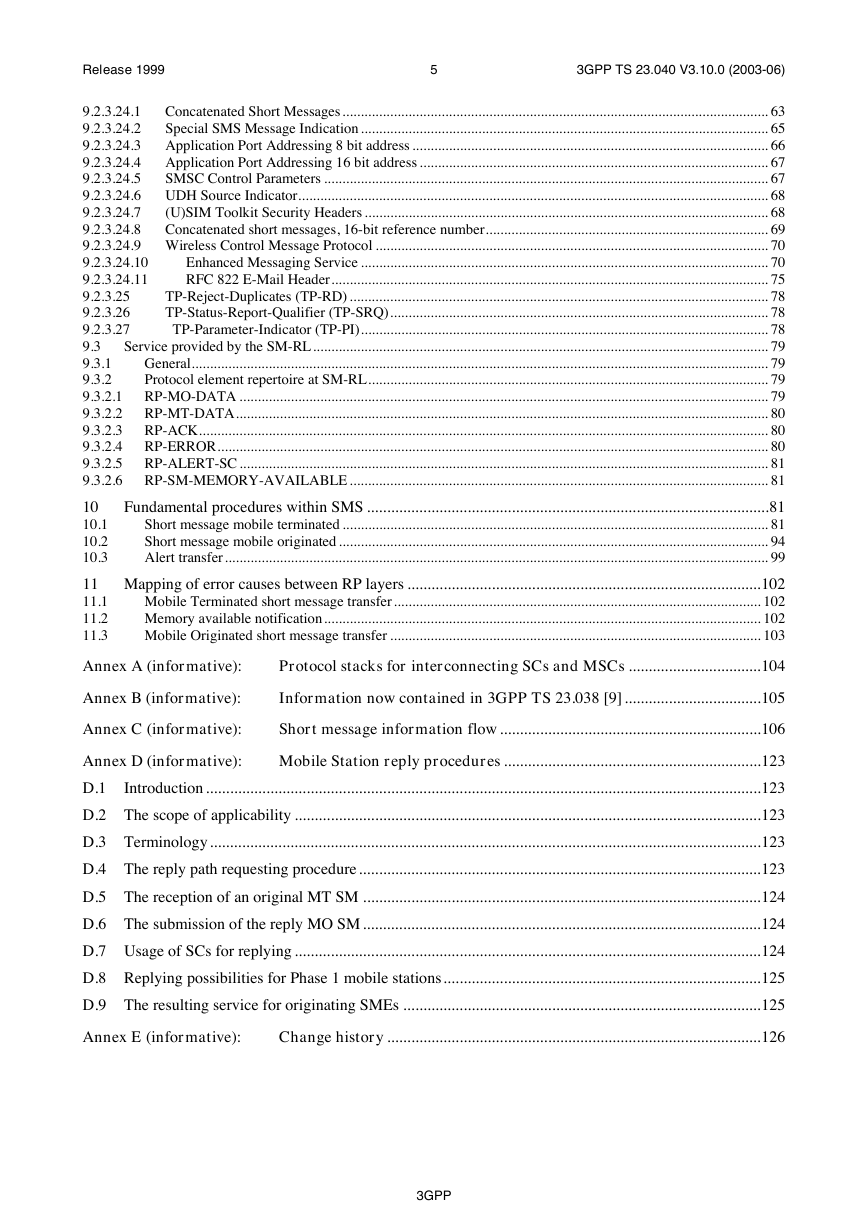

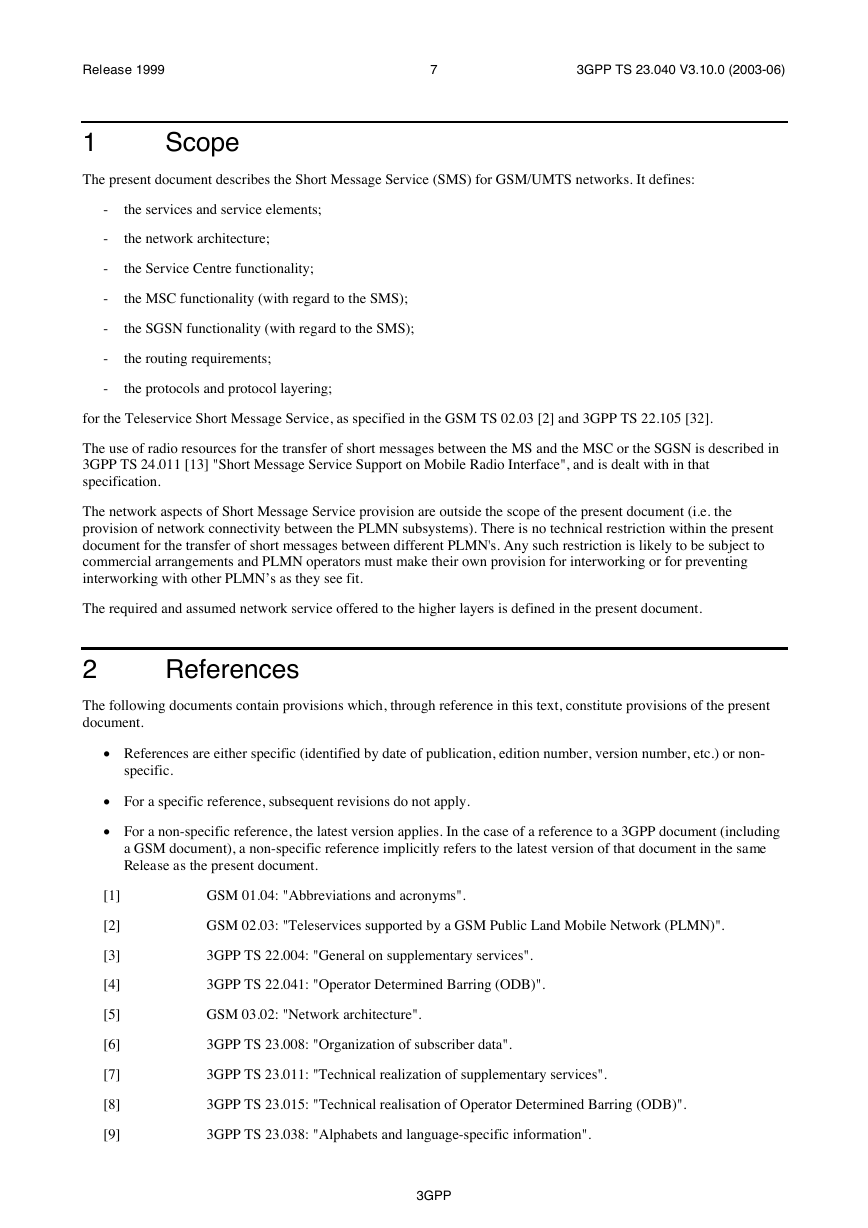









 2023年江西萍乡中考道德与法治真题及答案.doc
2023年江西萍乡中考道德与法治真题及答案.doc 2012年重庆南川中考生物真题及答案.doc
2012年重庆南川中考生物真题及答案.doc 2013年江西师范大学地理学综合及文艺理论基础考研真题.doc
2013年江西师范大学地理学综合及文艺理论基础考研真题.doc 2020年四川甘孜小升初语文真题及答案I卷.doc
2020年四川甘孜小升初语文真题及答案I卷.doc 2020年注册岩土工程师专业基础考试真题及答案.doc
2020年注册岩土工程师专业基础考试真题及答案.doc 2023-2024学年福建省厦门市九年级上学期数学月考试题及答案.doc
2023-2024学年福建省厦门市九年级上学期数学月考试题及答案.doc 2021-2022学年辽宁省沈阳市大东区九年级上学期语文期末试题及答案.doc
2021-2022学年辽宁省沈阳市大东区九年级上学期语文期末试题及答案.doc 2022-2023学年北京东城区初三第一学期物理期末试卷及答案.doc
2022-2023学年北京东城区初三第一学期物理期末试卷及答案.doc 2018上半年江西教师资格初中地理学科知识与教学能力真题及答案.doc
2018上半年江西教师资格初中地理学科知识与教学能力真题及答案.doc 2012年河北国家公务员申论考试真题及答案-省级.doc
2012年河北国家公务员申论考试真题及答案-省级.doc 2020-2021学年江苏省扬州市江都区邵樊片九年级上学期数学第一次质量检测试题及答案.doc
2020-2021学年江苏省扬州市江都区邵樊片九年级上学期数学第一次质量检测试题及答案.doc 2022下半年黑龙江教师资格证中学综合素质真题及答案.doc
2022下半年黑龙江教师资格证中学综合素质真题及答案.doc